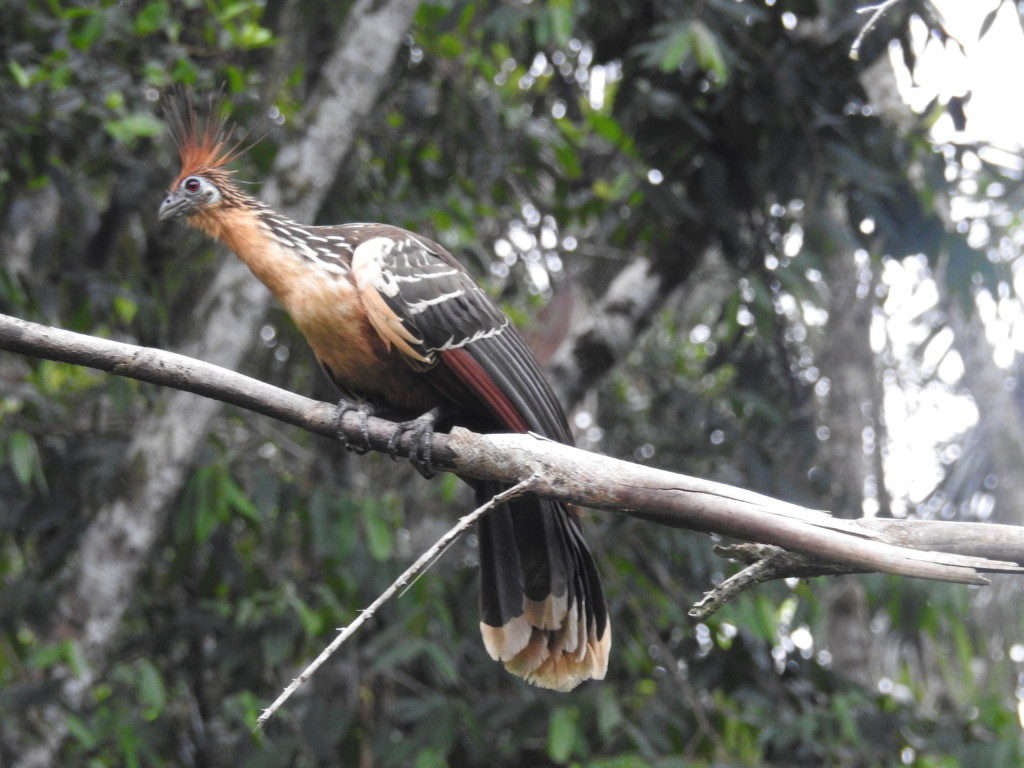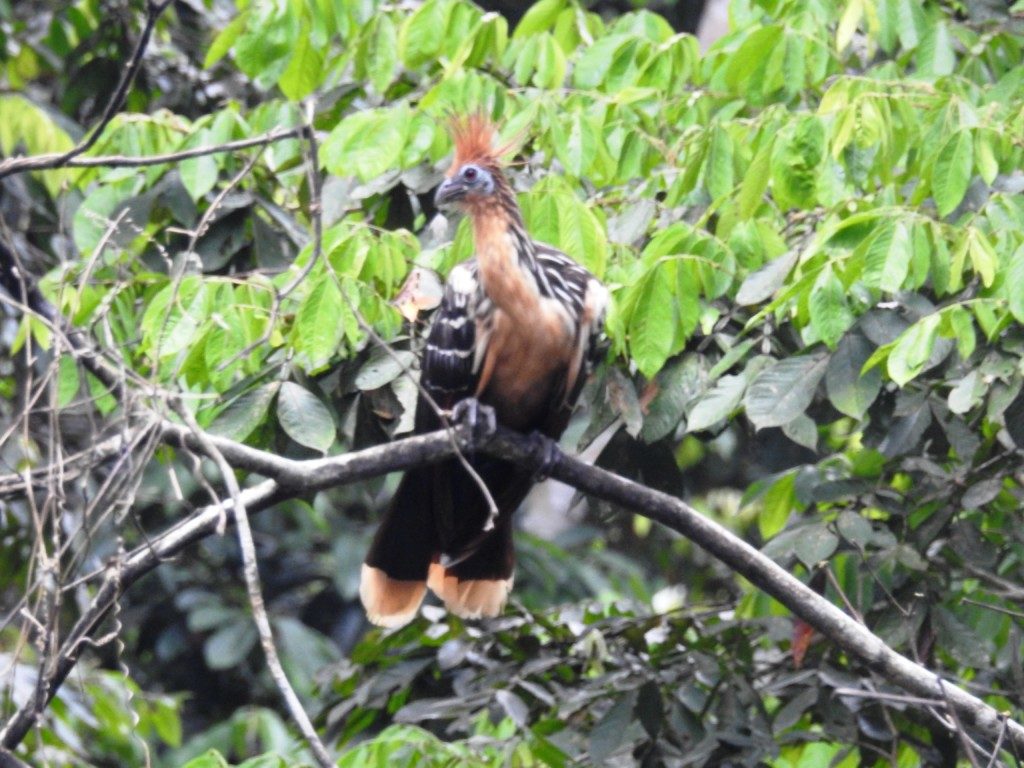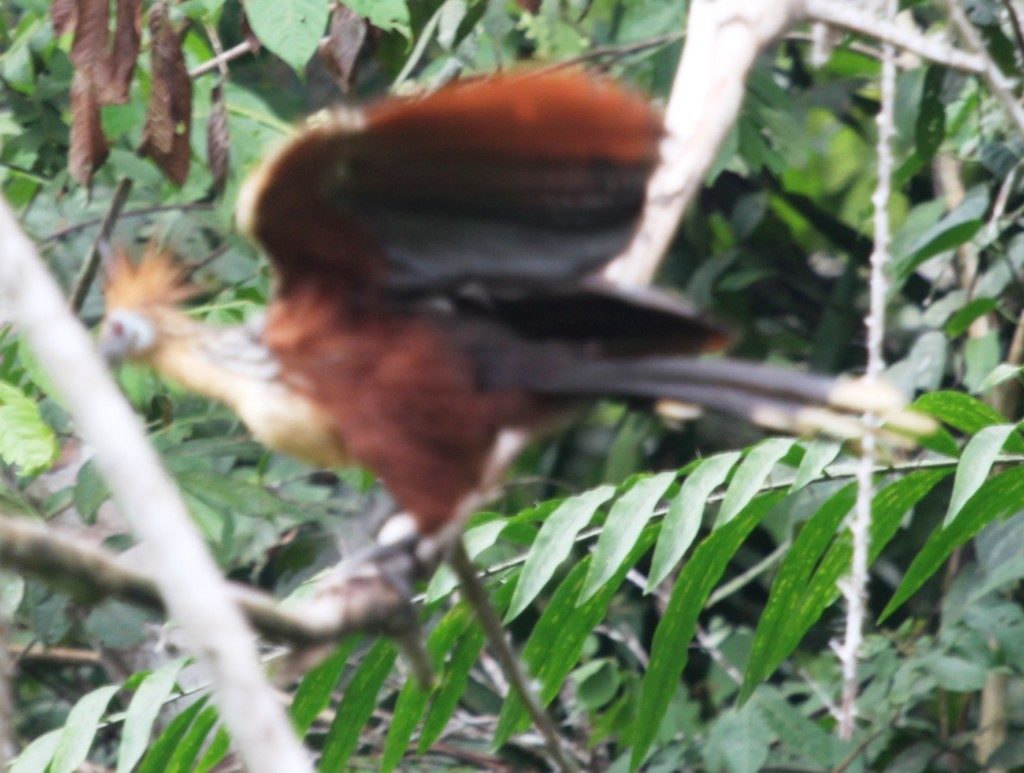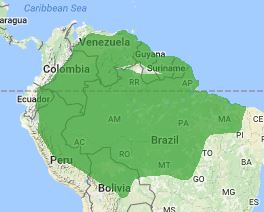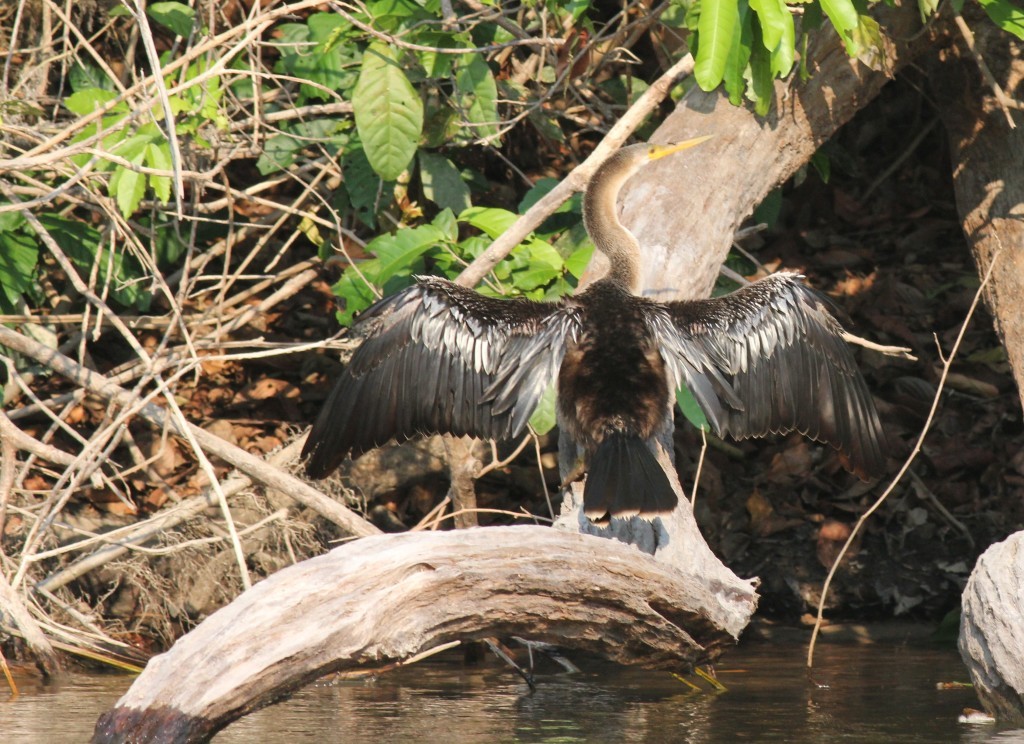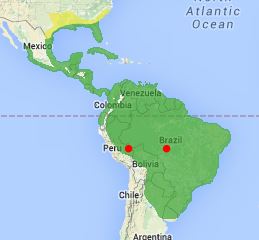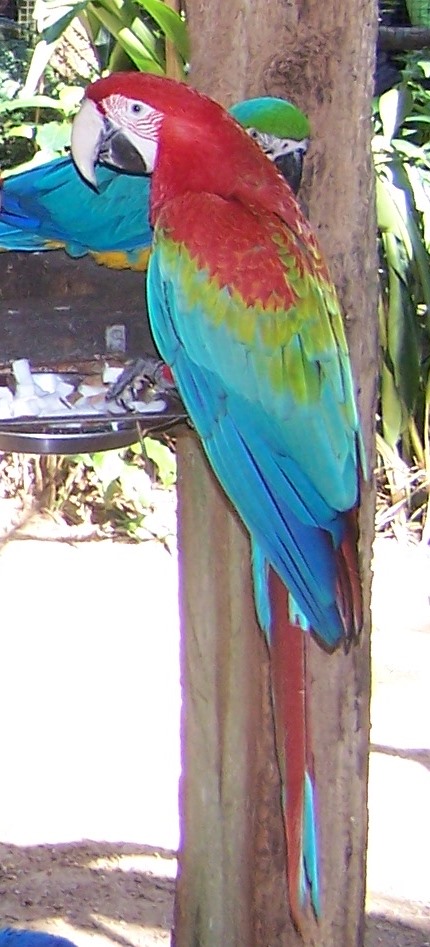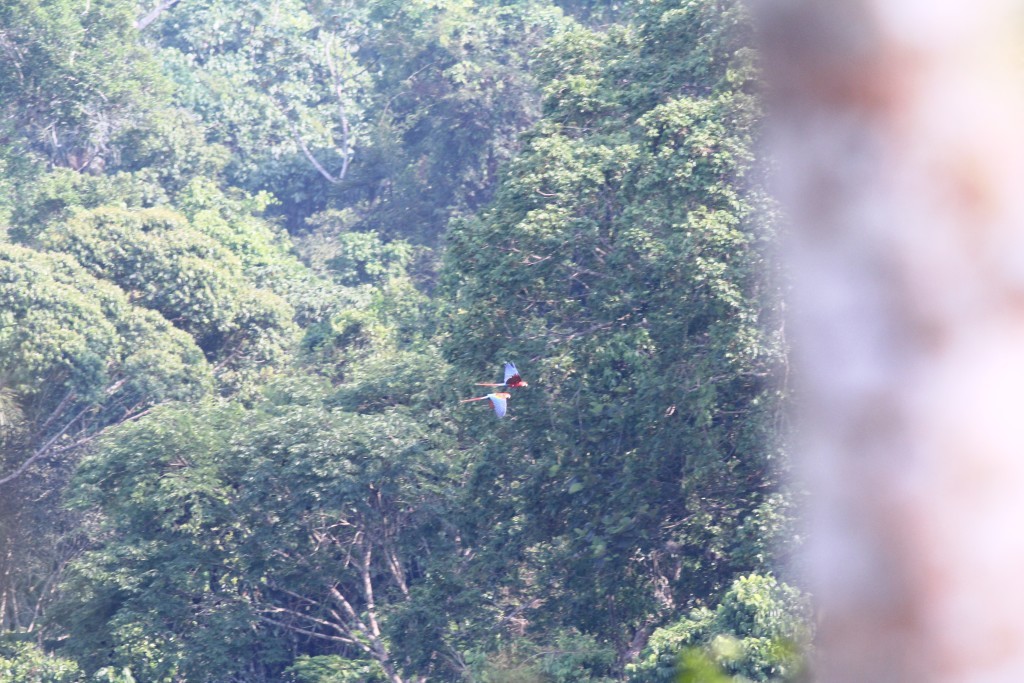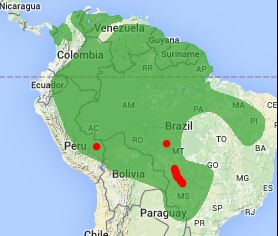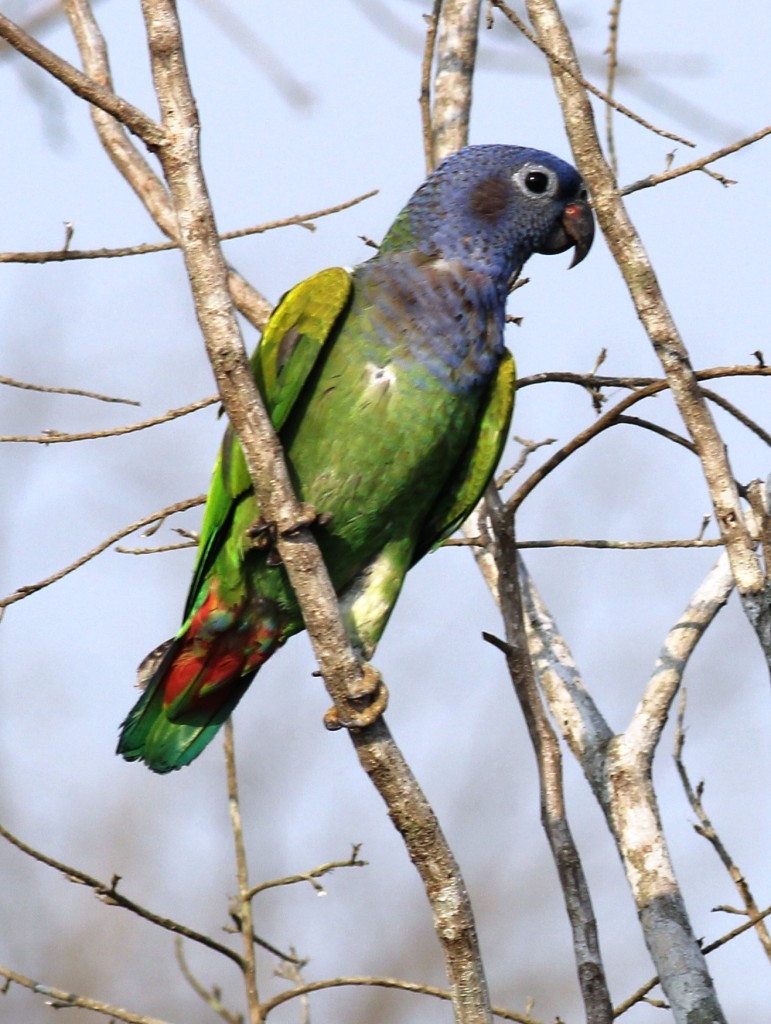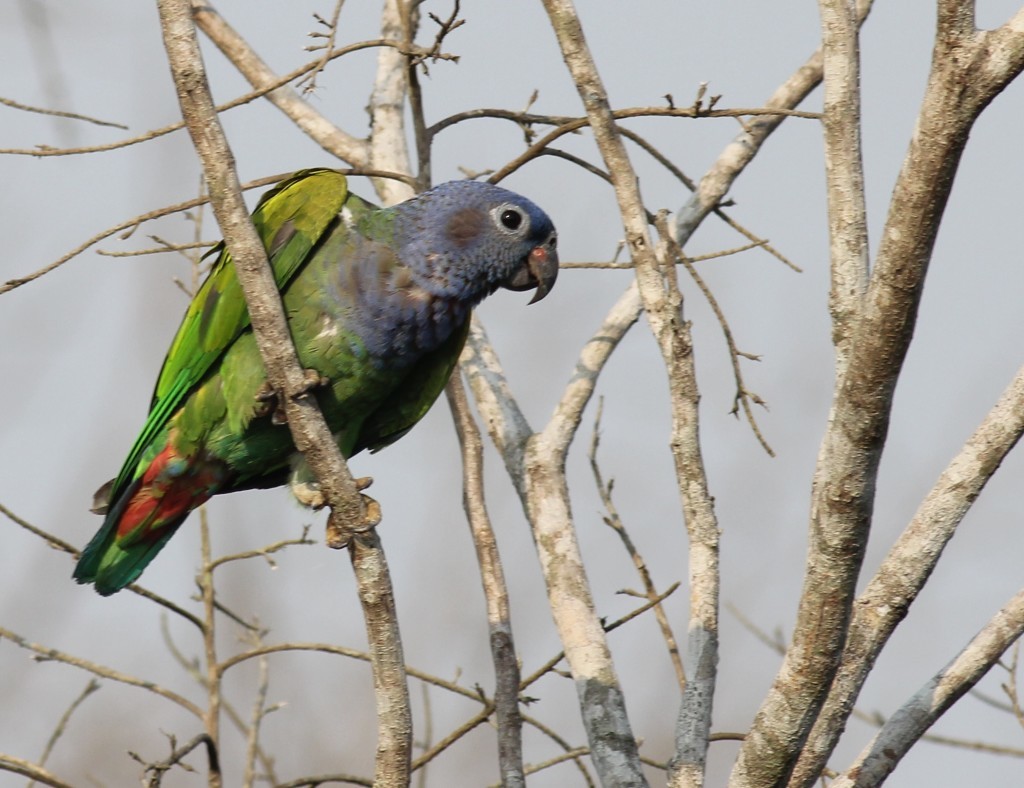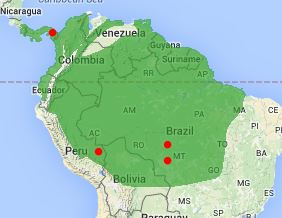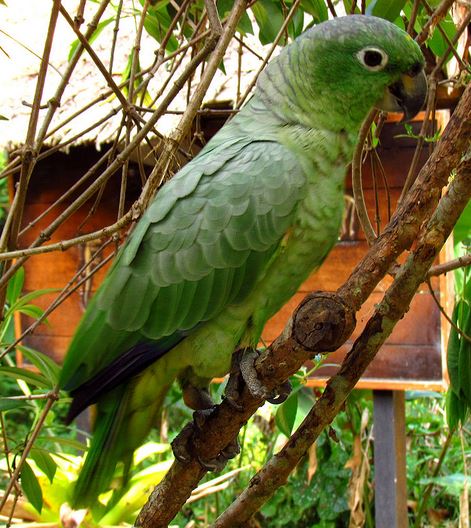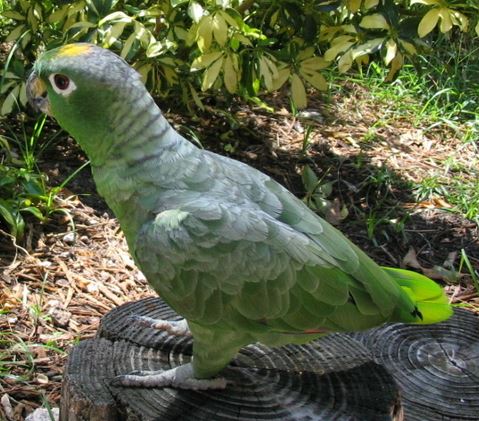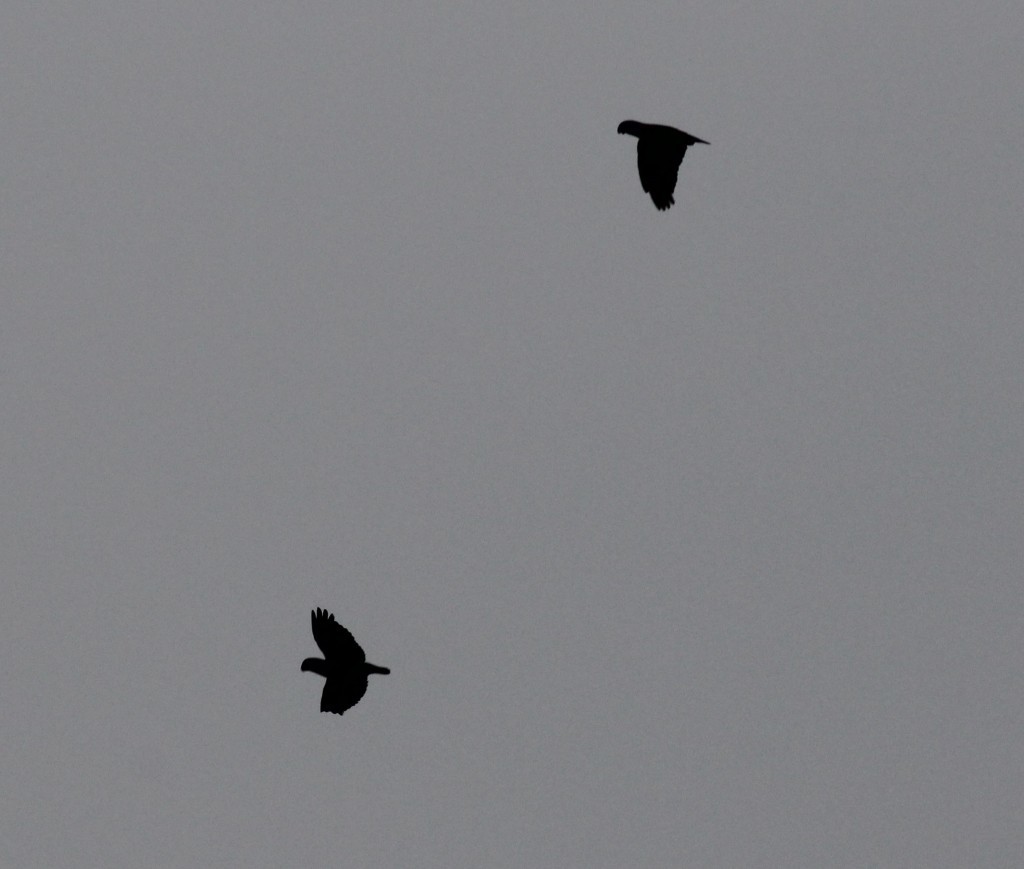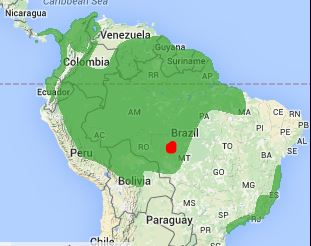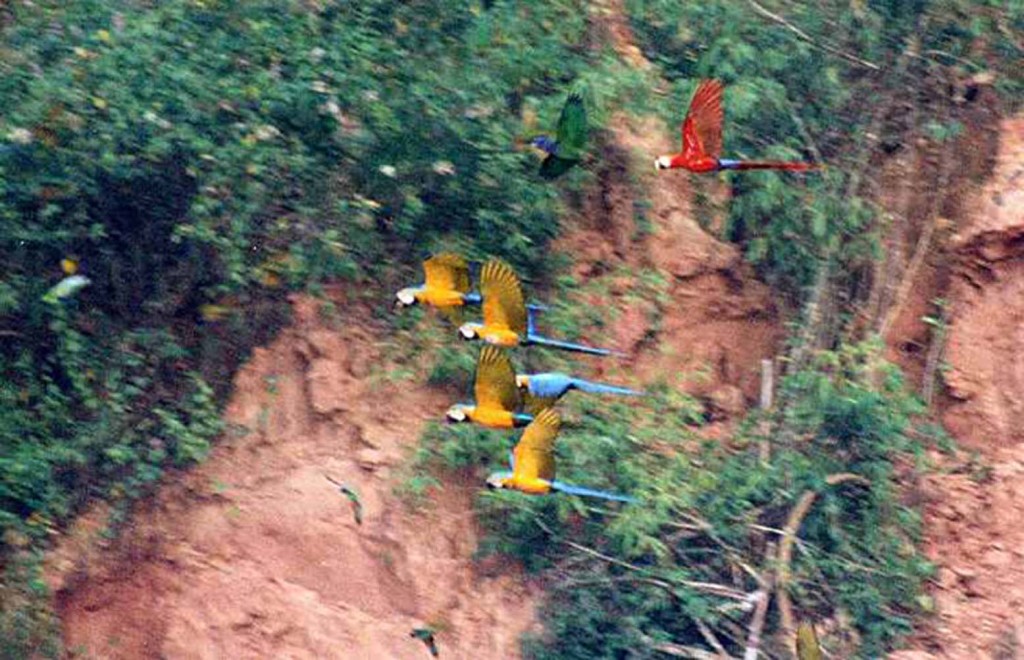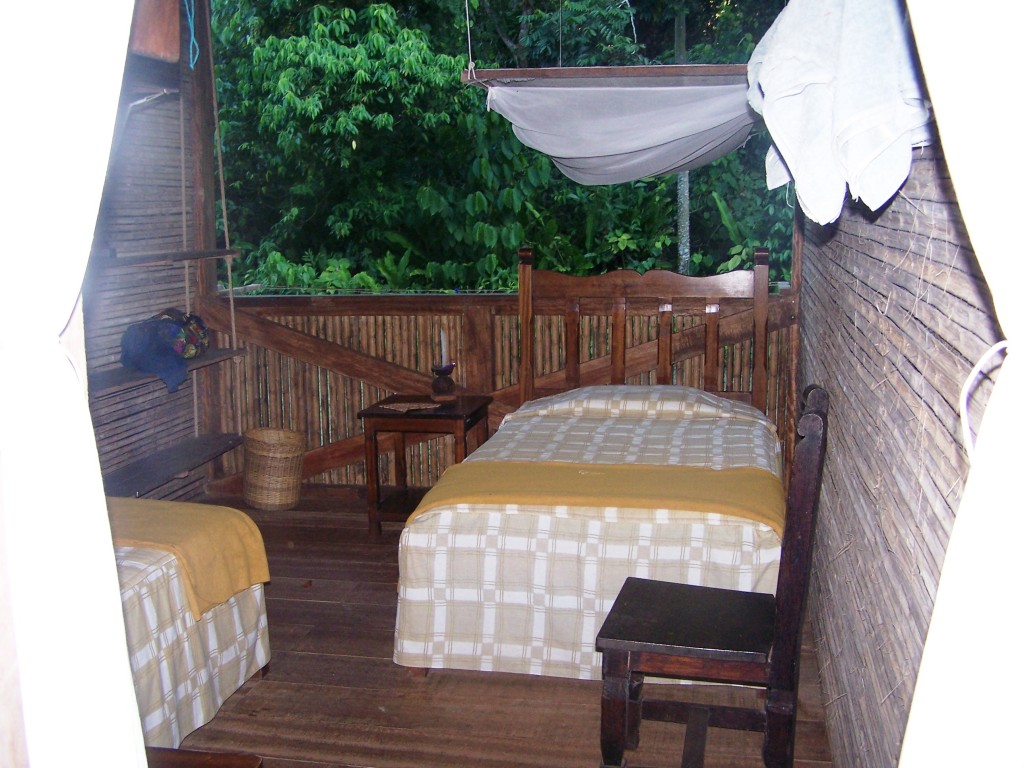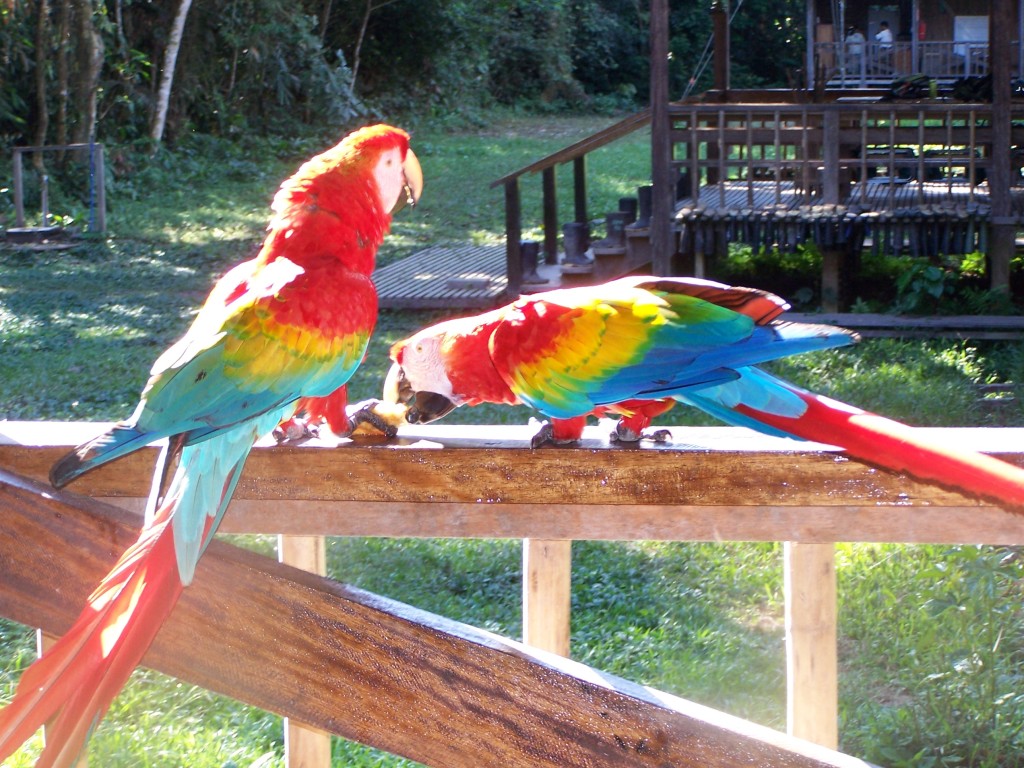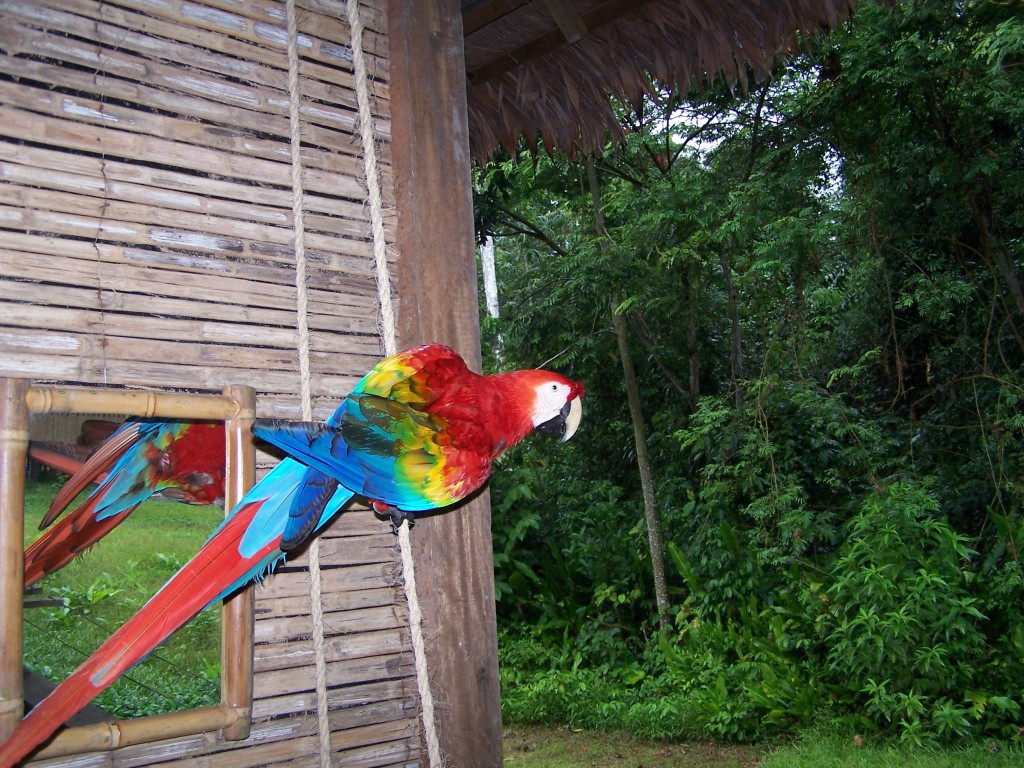The Yellow-crowned Amazon or Yellow-crowned Parrot (Amazona ochrocephala), is a species of parrot, native to the tropical South America and Panama. Subspecies include xantholaema, nattereri and panamensis.
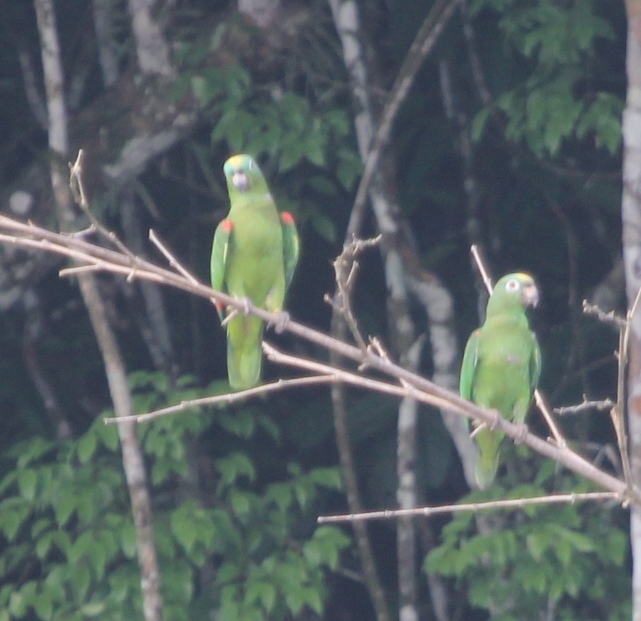
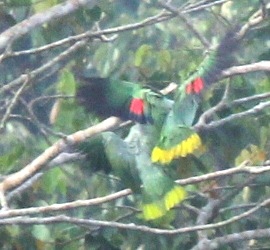

Sorry they are a bit blurry, I was trying to focus on them as part of a large group at the Napo clay lick. They have quite a large range in in Brazil, Colombia, Bolivia, Ecuador, Peru, and Venezuela. I saw these guys at the large parrot clay lick near Napo Wildlife Center. Also try looking for them at clay licks near Tambopata & Manu in Peru.
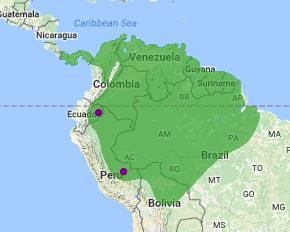
LEARN MORE ABOUT YELLOW-CROWNED PARROTS
VIDEOS
This wasn’t easy as there are hundreds of videos of these birds as pets but few in the wild. This pair in swift flight is very typical of how quick you have to be to get a decent shot.
This is in an aviary but at least it’s a nice close-up!

